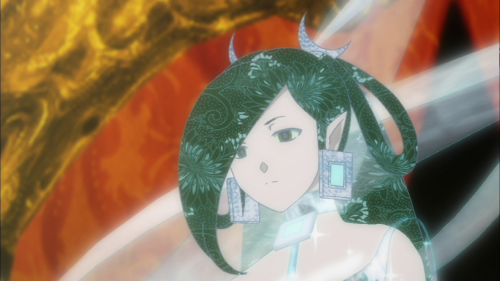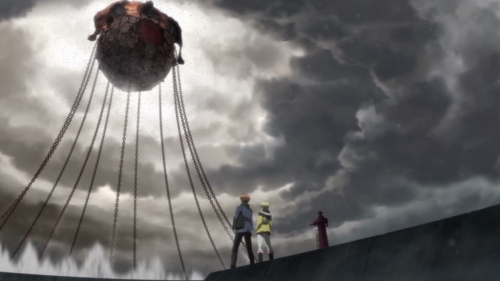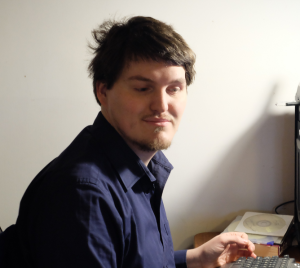The Retelling Retold – Thomas Wrightson visits the Guest Blog
Since storytelling began, humans have retold and reworked tales. Moral messages, personal fantasies, whimsical tales, life lessons, histories, all have been put through the lens of the storyteller for uncountable generations. But why? Because of this ubiquity, the retelling can be overused. To me, the retellings that stand out the most are ones which take an old story and give it a proper new spin, make it relevant to a modern audience or even decontextualize the story as a whole.
There are too many retellings to cover in one article, from Beowulf (c. 700+) to Journey to the West (Chala-hey-cha—wait, what was I saying?). So we’ll focus on the three old stories that inspired my debut novel: The Count of Monte Cristo, the work of William Shakespeare, and the legend of Faust as popularised by Christopher Marlowe and Johann Wolfgang von Goethe.
Beginning with the seminal revenge tale penned by Alexandre Dumas and Auguste Maquet’s seminal revenge tale, it has undeniable appeal for the creative writer. The original has adventure, suspense, scandal, romance, and a moral message. Its speculative retellings tend to be grouped into either relatively faithful recreations in new settings (Gankutsuou, Lang Ya Bang/Nirvana in Fire), original tales that draw heavy inspiration from it (The Stars My Destination, A Fire Born of Exile, Scavenge the Stars), and small nods in otherwise original tales (too many). It’s telling that ‘Monte Cristo’ has become shorthand for long-term calculated revenge.
Several alterations are found in most retellings. Though the core is left intact. The protagonist is often changed to a woman, opening up gender-based topics. The pace is increased, and the cast cut down in size. Finally, and most frequently today, the revenge is shown in an ambiguous moral light, a topic only partly addressed in the original story. Revenge is no longer seen as noble in many Western countries, and in fiction is predominantly portrayed in an at-least ambiguous way. The price is heavy, and innocents will be caught up in events.

Moving onto Shakespeare, a topic with whole areas of scholarship devoted to it, needing barely an introduction. Not surprising when he was a master of reworking stories himself. Works inspired by him are beyond reasonable counting, and range from prosaic and tragic (Joe MacBeth) to fantastic and funny (Wyrd Sisters). For the sake of sanity and brevity, only two examples will be discussed in any detail.
The first, and a personal favourite, is the anime/manga Zetsuen no Tempest. A fantasy shonen telling of a magical civil war and the machinations of two ancient trees, the storyline blends elements from multiple Shakespeare plays into a narrative that plays with parallel themes of love, betrayal and self-discovery alongside a subversion of many established shonen tropes. Flipping to science fiction, the movie Forbidden Planet makes liberal use of an initial set-up strongly reminiscent of The Tempest, and plays with parallel themes of the use of power, and civilization versus savagery. Whether intentional or not, the similarity is there.

For Faust, there is a deeper tradition to draw on, going back at least to Theophilus of Adana that has someone selling their immortal soul for a boon. There is a distinct difference between the two main sources for the modern tradition; Marlowe’s Doctor Faustus features a discontented sorcerer willingly selling his soul for power, while Goethe’s two-part Faust uses a more morally complex man fallen to ennui and ultimately saved through selfless repentance. This early inconsistency is still present and ongoing in fiction.
The perspectives jump about all over the place from the condemnatory (The Devil and Tom Walker, Berserk), or the morally ambivalent (Black Butler, The Picture of Dorian Gray), to the sympathetic (Puella Magi Madoka Magica) or comedic (Bedazzled). Some stories play with the audience as to the veracity of events (Angel Heart). Faust can even feature in person (Grave Importance, Knights Contract). There’s no solidity in portrayals, because a deal with some supernatural other is so ubiquitous and varies from telling to telling. Especially when dealing with the popular if inaccurate knowledge of pre-Christian versus Christian doctrines. One commonality is that the specific ‘deal with the devil’ is generally restricted to fantasy and horror, with other genres using it more as window dressing or allusion over direct retelling.
Now for the bit where I talk Starborn Vendetta, the novel inspired by these old tales. It started after I watched Gankutsuou, a surprisingly faithful sci-fi anime retelling of Monte Cristo. As Mahiro Maeda did for Gankutsuou, I took the basic set-up, and removed then-expected themes of redemption and forgiveness which seemed at odds with the overall narrative as read today. Not every character has an analogue, and the cast is smaller, but there is a strong undercurrent where Dumas’s and Maquet’s reflections can be seen.
I drew on two other works, Macbeth and Goethe’s Faust, to provide more muscle and sinew to the Monte Cristo skeleton. Macbeth provided several character names, and a deeper familial drama surrounding the Vorn-Solari family. Faust contributes another character archetype, and the key element of a bargain struck with a Mephistophelian figure that the protagonist schemes to escape from.
Several characters in the story are named after figures from the books (Mercedes, Gaspard, Ali, Gretchen, Duncan, Andréa, Hydee). But as I wrote, the story became something more, a retelling of those narratives for a world I’d lived in and through. The internet age, 9/11 and the War on Terror, the Trump administration, the shifting politics of Russia and China, and later COVID-19. When Starborn Vendetta was accepted and the publisher wanted a series, I built on that theme. Old stories retold for a new audience inspired by current world events. Well, current for the years 2019 to 2021.
This is just scratching the surface of these topics, but for now we must return to the point of this article. There are a number of reasons why stories are rewritten, but I can think of one that’s very compelling; commonality.
Revenge stories give a catharsis in a world bound by rules for the sake of the common people, and Dumas and Maquet provided an ideal template. The tragedies and comedies of Shakespeare reveal many universal wants and needs that haven’t gone away in the modern world. And who wouldn’t be slightly tempted by the kind of bargain Faust was offered? It’s likely that someone somewhere shares virtues and faults with another, and for many there are three very common factors people cope with every day; temptation, love or hate, and the wish for payback.
A final thing is that when talking about retellings, writers seldom think of them as what they are classified by the publisher or the reading public. Starborn Vendetta is classified as space opera, but I had difficulty thinking of it as that, given my preconceptions about that genre. To me, it’s still rooted in its origin as a melding of three old tales.

Author bio
Thomas Wrightson is a British genre author living on Ynys Mon in the top left-hand corner of Wales. Fascinated with creating stories since childhood, and writing them down since his teenage years, he has long searched out the best voices in fantasy and science fiction across the world.
His 2023 debut, Starborn Vendetta, is the first in a space opera pentalogy dubbed The Cluster Cycle. The premise is simple: old stories, whether Monte Cristo or Golden Age detective novels, reworked for a sci-fi premise and modern problems. He also maintains a blog for articles and short stories, and has a podcast dubbed ‘Author Talks’ featuring ruminations on various topics and short story readings.
For more information, visit Thomas Wrightson’s website.
Please Feel Free to Share:








